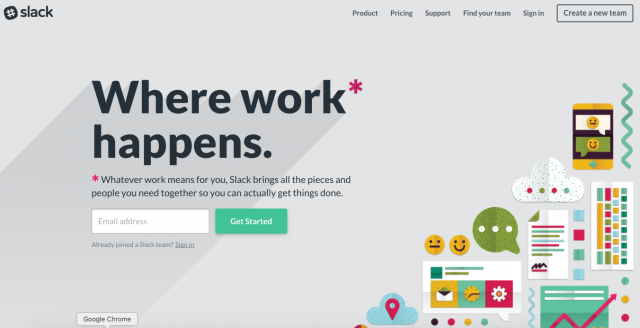Alex Tanglao
Alex Tanglao is a seasoned professional with expertise in startups, legal technology, and business management. Alex has held leadership roles, including Director of Strategy & Operations at Elevate Digital, where he streamlined operations and managed teams, and Director of Ecommerce at Allies of Skin, driving global growth. Alex served as Marketing Manager at Zegal, driving legaltech and educating businesses on startup legal topics. With a background in content strategy from LawPath, Alex combines a deep understanding of legal services with operational excellence and innovative marketing strategies to help businesses thrive in dynamic, fast-paced environments.
Need any help? Contact us:

Table of Contents
Running an e-commerce business is no easy feat. Without the economies of scale from which large corporations can benefit, smaller businesses can sometimes end up spending more on a whole host of things, including business travel, employee turnover, insurance and professional services. Here, we share with you 6 quick tips for keeping your operations lean and managing business costs.
1. Share office space
Property is expensive and rental costs can take up a significant portion of your expenditure. If you’re a small business owner with a lean team, consider ditching your office space and working from a co-working space such as The Hub and The Working Capitol in Singapore, or Paperclip in Hong Kong. These arrangements often include office equipment, Internet access and meeting spaces. Prices typically vary depending on whether you choose a hotdesk, a dedicated desk or an office room, so you get to choose an arrangement that fits your needs. Beyond saving on rental and utility costs, you also earn yourself a community of entrepreneurs from whom you can exchange insights when your business is stuck in a rut.

Source: Paperclip
However, there might be crucial reasons why your business needs to operate from its own office space, such as the need to maintain confidentiality of certain information. If your square area is bigger than what you need, consider renting out excess office space to non-competing businesses! This is a practical way to minimise costs while maximising access to office facilities. Be sure to have in place a Co-working Space Application Form and Terms of Use to align both parties’ expectations in terms of what facilities the user can access, the monthly charge for rent, and the date for rent payment.
2. Tap on the power of pooling
Given that large companies often save costs because of economies of scale, why not try to reap the same benefit as a small business? Reach out to other businesses in your industry that purchase from the same suppliers as you do. Based on your combined purchasing power, decide on the amount of savings you want – say, a 25 percent cut. Then, reach out to suppliers and let them know that you are collectively going to buy from the one vendor that offers the best price. To make it a sweeter deal for the supplier, you could work out an arrangement where you work exclusively with them for a sustained period of time. Purchasing in bigger quantities ups your bargaining power, and suppliers will be more inclined to give you discounts!
3. Encourage efficient use of time
In the business world, time is money. Top time-wasters that threaten your employees’ productivity include unnecessary or inefficient meetings, social media sites, regular personal business, and excessive or prolonged breaks. By having your employees work in a more focused and efficient manner, you can improve your time on target. Here are some quick tips for helping everyone stay focused during working hours:
- Streamline meetings. Ensure meetings have a purpose and allocate time more gingerly. Stick to the agenda and you’ll probably find you don’t need as long or as many.
- Track task KPI’s to create more structure and accountability and more effectively monitor effectiveness.
- Implement an Internet policy that is clear and consistent on what is allowed and what is not.
- Use website blockers. While employees can simply turn to their smartphones, it is apparently more inconvenient and obvious to surf the Internet from a mobile phone.
- Challenge employees in terms of their initiative, decision-making and creative skills since bored employees are more likely to be distracted.
- Be more visible by spending more time on the office floor. The mere presence of management is a deterrent to time wasting.
- Give rewards to the most productive workers or the most efficient team.
Source: OPEN Forum
Related reading: Our CEO’s favourite productivity tools
4. Have virtual meetings & use collaboration tools
Although COVID redefined the modern working environment, 2023 will also see the return of the traditional workplace, and business travel will significantly increase again. Triage when it’s worthwhile travelling for client and partner meetings, and use virtual meetings for the rest. You’ll save a little on travel expenses and a LOT on lost time. You may ever be able to cut back on your needs for office space.

Source: Slack
Technologies such as Google Drive, Basecamp and Slack help to centralise documents and enable you to collaborate online, as an alternative to physical meetings with paper documents. If you really require a real-time discussion, simply meet via conference call. This provides you increased flexibility. If one participant is only needed for a few minutes, invite him into the meeting only when necessary rather than have him spend hours at a physical meeting. You also save on costs associated with travel and free up time to focus on other important tasks.
In case your employees have to be traveling for business purposes, the best option is to find a human-centric approach providing a superior worldwide travel solution, aimed at increasing employee retention and job satisfaction rates while saving time and money, at the same time.
Every mobility and relocation manager needs to consider AltoVita’s solution as a corporate accommodation platform that focuses on assisting organizations when finding best lodging options for their employees’ business travels or relocations.
5. Invest in long-term organic channels
Obviously “organic traffic” is important – but it’s dangerously easy to lose focus and revert to prioritising direct ROI sources such as paid-traffic, be it digital or offline, and neglect to invest in long-term channels like SEO, Social, and Referral traffic.
These sources can notoriously take months or years to start delivering results. Here’s the catch – your paid traffic sources will only scale linearly whilst your organic efforts are evergreen and scale exponentially.
Instead of relying on traditional marketing, build your online following and increase social media use. Consider leveraging the expertise of an Amazon Marketing Agency to optimize your presence on one of the most influential online platforms, reaching a broader audience and maximizing your brand visibility. This will allow your business to build a brand on the Internet, which is increasingly the primary resource that potential customers go to when making purchasing decisions.
- Grow your social networks. Social networks allow you to do many things for free, including alerting followers about promotions, offering customer support and instant feedback, and connecting with brand influencers and other brands in your space.
- Think in terms of Search Engine Optimisation (SEO). By using simple free ways to boost your chances of landing within top search engine results, you can acquire new customers looking for terms related to your product.
- Give benefits for referrals. While acquiring new customers is an obvious priority, keeping the ones you have and giving them incentive to grow your network for you saves money.
- Share valuable content. According to this HubSpot study, 82% of marketers who blog daily and 57% of marketers who blog monthly acquired a customer because of the blog.
Source: Forbes
Related reading: 7 Online Marketing Tips For Your Small Business
6. Downscale with online SaaS software
Technology cuts business costs by allowing us to cheaply and easily manage tasks we don’t have time or budget to handle fulltime, especially where hiring employees to do some of this work would be costly and impractical. For HR and payroll software, there is Gpayroll, Talenox and HReasily to manage your HR needs more affordably and efficiently. As for accounting, Xero helps you manage invoicing and bookkeeping affordably for your small business.
- Automate wherever possible. With the boom in SaaS tools there’s a way to automate at least the routine parts of nearly every business function.
- Move IT infrastructure to the cloud. If and when your needs grow, you just upgrade to a higher package with no fixed costs or depreciation involved. Your data can safely reside on cloud-based storage systems like Dropbox or Google Drive.
- Opt for free apps and tools. If you only look a little carefully, you’ll find a free version for nearly every software that your business uses daily.
- Invest in green technology. Even something as simple as using double sided printing instead of single sided, can save hundreds of trees and stationery costs annually.
Source: Entrepreneur
When it comes to managing your legal needs, Zegal is a tech tool that checks all the boxes. You might find that it is too costly to hire an in-house lawyer or a law firm to draft your legal documents. Rather than neglect the legal needs of your business, why not join the more than 3000 businesses that rely on Zegal daily and opt for an online tool that helps you cut costs?
As a Zegal subscriber, you can:
- Gain access to a vast document library that you can customise for your needs with our simple-to-navigate Q&A interface.
- Eliminate unnecessary face-to-face meetings or repeated back-and-forth over email with our e-sign function – simply invite the other party to sign the legal document via our platform.
- Avoid printing lengthy legal documents as you get to store all your legal documents in the cloud, where it is easily accessible even when you’re on the go.

How do you control operational costs?
You can reduce your operational costs by presetting and creating limited budgets. Additionally, you can also minimize your spending on utilities such as water, gas, and others. Also, there are facilities that could be redundant and unnecessary. Check and see if all you are using is useful to you. For instance, if you are a manufacturing start up, it is crucial to use a solution like MRP Software to automate your manufacturing process.





